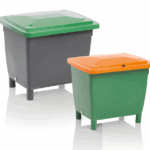Here will discuss about Similarities and Differences between LDPE vs HDPE. Polyethylene is one of the thermoplastics that is used the most often across the globe. It is used to make a broad variety of products, including shampoo bottles, children’s toys, and supermarket bags. On the basis of its molecular structure, it is possible to divide it up into a few different subcategories, each of which has a distinct set of properties that make it suited for use in a certain set of applications. The following categories of polyethylene are the most common:
- low density polyethylene (LDPE). This plastic may be transparent or translucent and has the qualities of flexibility, chemical resistance, and waterproofing. It is put to use in the production of a vast assortment of goods, such as plastic grocery bags, plastic wrap and film, flexible packaging material, and injection moulded components, amongst other things.
- Polyethylene with a high density (HDPE). When compared to LDPE, HDPE possesses more stiffness and durability. It comes in a variety of shades ranging from transparent to opaque and has exceptional resistance to chemical reactions. HDPE is used to make a variety of products, including as rigid packing containers, toys, outdoor furniture and structures, culinary equipment, and plumbing pipes, among other things.
The article that follows is a comparison of LDPE and HDPE that is more in-depth than the one that came before it. It details the similarities and differences between the two different types of polyethylene. If you require consultancy about HDPE and LDPE our expert will assist you and also we are LDPE Granules Suppliers India and HDPE Granules Manufacturers India all over in India.
Comparative characteristics of LDPE and HDPE
Both low-density polyethylene (LDPE) and high-density polyethylene (HDPE) have many features due to the fact that its primary components are the identical polymerized ethylene molecules. As an example, the two kinds of material have the same characteristics:
- Lightweight construction material
- A tensile strength that ranges between 0.20 and 0.40 N/mm2
- Extremely high resistance to impact
- Resistance to the effects of chemicals, water vapour, and the elements
- High degree of recyclability
- Producing at a low cost both in terms of manufacturing and fabrication
Both materials exhibit the following characteristics when they are subjected to injection moulding processes:
- Melting temperatures of 355 degrees Fahrenheit to 535 degrees Celsius (180 to 280 degrees Celsius).
- Quick times for injections
- It is not essential to dry the completed portion.
Because of their similarity in the properties discussed above, as well as in other features, LDPE and HDPE are well-suited for applications that are quite similar to one another. The following is a list of the types of businesses that often make use of both of these materials:
- Automotive
- Electrical
- Hydraulics and pneumatics respectively
- Packaging
- Pipe and piping
Comparison of LDPE and HDPE in Various Aspects
Although LDPE and HDPE have a lot of qualities, they are essentially different on the inside, which results in a lot of variances. In low-density polyethylene (LDPE), the polymer chains that make up the material are branched, but in high-density polyethylene (HDPE), the polymers have a more crystalline structure. Because of these many ways in which polymers are organised, the resulting materials each have their own unique properties.
Variations in Outer Appearance and Constituents
LDPE is more malleable and yielding than its more rigid counterpart, HDPE. It is also more translucent and has a lower melting point of 115 degrees Celsius. In comparison to HDPE, it has a higher probability of cracking when subjected to stress.
HDPE is more resistant to chemicals and has a more solid and long-lasting structure. Because it has a greater melting point than LDPE, it is more resistant to higher temperatures. Its melting point is 135 degrees Celsius. The material’s increased crystalline structure also contributes to its increased strength and increased opacity.
Read more:- Click here






